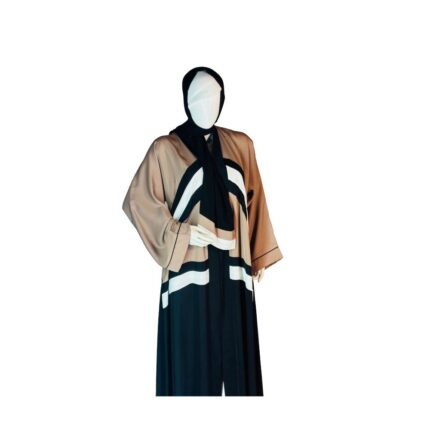



ABAYA
₨10,900.00 Original price was: ₨10,900.00.₨8,720.00Current price is: ₨8,720.00.
- Women in Muslim-majority regions.
- Popular among Muslim communities.
- Faith, tradition, identity.
An abaya is a traditional, loose-fitting garment worn by women, commonly in the Middle East, North Africa, and parts of South Asia. It is particularly associated with countries like Saudi Arabia, the UAE, Qatar, and Kuwait. The abaya is typically worn as a full-body covering over clothing, offering both modesty and cultural significance in Islamic societies.
Design and Structure:
- The abaya is usually a long, flowing robe that reaches the ankles. It can come in a variety of fabrics such as cotton, polyester, silk, or a mix of synthetic and natural fibers, often with a matte or glossy finish. While traditionally black, modern abayas are available in a range of colors, although black remains the most iconic.
- The cut is generally straight and unadorned, ensuring modesty, though there are some that feature elegant details like embroidery, lace, beads, or crystals, especially along the edges, sleeves, or collar. These embellishments are often discreet, highlighting the simplicity yet sophistication of the garment.
- It can be open-front or closed, depending on regional preferences. Some styles feature buttons, zippers, or ties to close the front, while others may have a loose, flowing design without fastenings.
Functionality and Modesty:
The abaya serves as a modest outer garment for Muslim women, fulfilling the requirement to dress modestly in public according to Islamic principles. The intent is to cover the body in a way that doesn’t attract unnecessary attention. It typically does not cover the face (unless paired with a niqab or burqa), but it can be worn with a headscarf like the hijab to cover the hair, neck, and sometimes the shoulders, further enhancing modesty.
Cultural and Religious Significance:
- The abaya’s role is not only religious but also deeply cultural. In some regions, wearing an abaya signifies one’s adherence to local customs or religious expectations. It can also indicate one’s affiliation with a particular community or group.
- Though the abaya is primarily associated with Muslim women, it is also worn by non-Muslims in some countries as a sign of respect for local traditions.


















Reviews
There are no reviews yet.